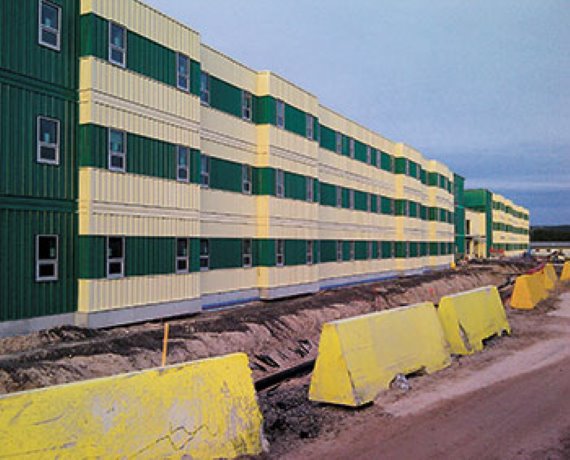Modular construction doesn’t have to result in a square box, according to one expert speaking at Buildex Calgary this year.
In the seminar, Modular Construction – Past, Present & Future, Cal Harvey, director of operations for Modus Inc., will trace the past, review what’s happening in the present and discuss the future of modular construction.
“What I’m trying to do is get people to think outside the box,” Harvey said.
“There is an institutional mindset that favours site-built construction. I want people to expand the way they look at construction to understand that modular really is a practical, cost-effective solution.”
Currently, modular construction includes a lot of trailer-type of buildings, small 12-foot-wide by 40 or 50-feet long modular buildings built in a factory environment and deployed to site, he said.
“That is transitioning to more of a holistic view of modular construction, whereby full commercial buildings are built in factory, in Lego-like components and deployed to site,” he said.
Clusters of trailers won’t define modular construction for much longer.
“These are fully-modularized commercial buildings that look and feel, and are indistinguishable from, site-built commercial buildings,” Harvey said.
“Yet, they’re built in a factory on a much shorter timeline, with higher quality-control standards.”
Modular construction is the way of the future, in Harvey’s view.
Modular construction reduces overall construction time. It increases the building quality and craftsmanship because the modules are built in a factory under tightly-controlled circumstances, Harvey explained.
Modular construction also increases worker safety because they’re working in a controlled environment.
Across Europe, major construction projects are modular.
In London, a replica of the Crystal Palace, originally a glass and cast-iron building in Hyde Park that housed the Great Exhibition of 1851, will be rebuilt by Chinese ZhongRong Group with a modular design that will cost more than $800 million.
In Paris, the new Centre Hospitalier d’Argenteuil will be the world’s largest modular structure, built by Cadolto Fertiggebäude GmbH.
“And, the way they’re building modular doesn’t look anything like the way we’re building modular in Canada,” Harvey said.
“In Canada, we’re still building square boxes, we’re assembling them in structures that are three or four storeys high.”
In Europe, they’re building 26-28 storey skyscrapers.”
European modular construction is architecturally designed, with pleasing aesthetics, with curves and glass facades – similar to any site-built skyscraper in Calgary, with one exception, said Harvey.
Many are modular.
In Alberta, the future of modular construction is evolving.
“The neat thing about Alberta is that we have some companies doing some really exciting work that are advancing the frontiers of modular construction,” Harvey said.
Modular Construction – Past, Present & Future takes place Tuesday, Nov. 5, starting at 2 p.m.



Recent Comments
comments for this post are closed